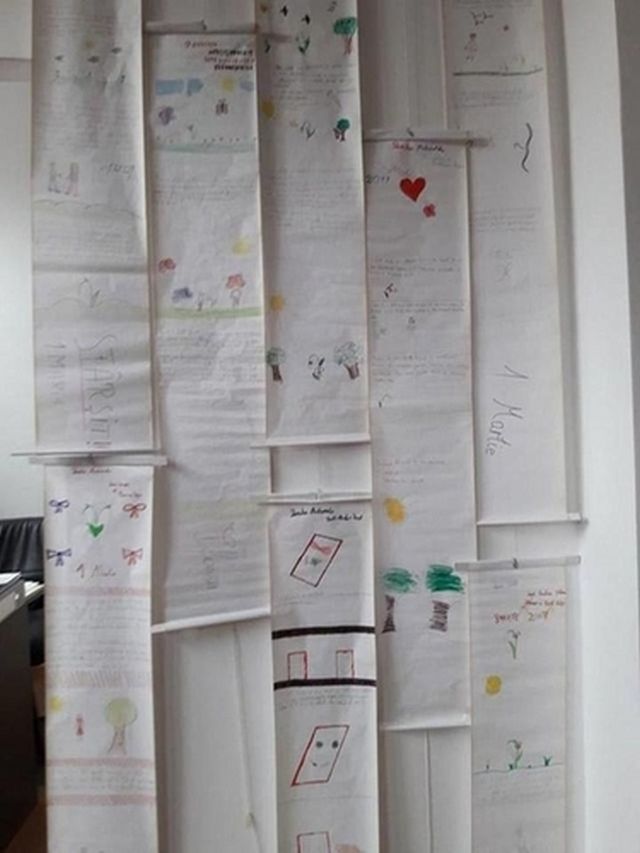Bread and Salt in the Romanian Tradition
Bread, ancient symbol of life, and salt, "mother of God" as it is called in the sayings of the people accounted, for Romanians, two elements with sacred character. Perhaps the most famous ritual that includes both remains that for welcoming guests with bread and salt as a sign of love, kindness and humanity. That’s why we welcomed in this way our guest teachers at the opening ceremony of the first transnational Erasmus+ meeting in Romania in November 2016. In the Orthodox Christian tradition, the bread is the symbol of life, that man gives to God. These sacred meanings were sent, moreover, in the folk tradition, bread meaning life itself. And we can not illustrate better this symbol than thinking how now, as before, the women in the villages of Moldova prepare to make bread: in clean clothes, with their changed shawls, kneading gently dough in the trough of wood, with flour sifted, clean spring water, adding yeast that will liven up the dough,as it will grow, refreshing then the pans and oven, making the sign of the cross before putting baking and finally, preparing a white napkin, on which the steaming bread will be placed. Honoring bread is still a sacred ritual in the villages of Moldova. You will not see any elder in this part of the country that do not quarrel harshly if he sees you throwing bread at the table or even remaining crumbs. Let us not to forget also the behavior of the people of the village to the fresh bread on the table: the older pater familias, or the children's mother makes the sign of the cross over the bread and then break and divide it as a symbol transferred then also to the polenta as a substitute for the bread of "every day" which is then cut with thread in four cross-shaped parts. The first piece (mostly of new wheat bread) is considered an offering to the dead and should be discarded ritually for them. The latest, called "piece of luck" or "piece of power" focuses in in the folk thinking, a magical power to influence the future of children, but also of adults. Corn, flour, dough and finally bread are loaded by a symbolism as old as it is present in the rural world, being, as appropriate, a sign of joy, fruitfulness, abundance, purity. Taking different forms, bread accompanies man throughout life, in moments of joy and in trouble. And this is visible today in traditional communities at various times throughout the year. The same sacred attributes salt also had and has nowadays in the Moldovan villages. Not incidentally, it is said that when the people get rid salt away means "to wrangle", this being an element of great value in everyday life. Hence the saying "like salt in food," suggesting that something that is said to be indispensable in certain situations, as, no salt, no taste food.
Andrei Coroș, pupil, "Constantin Noica" Theoretical High School Sibiu
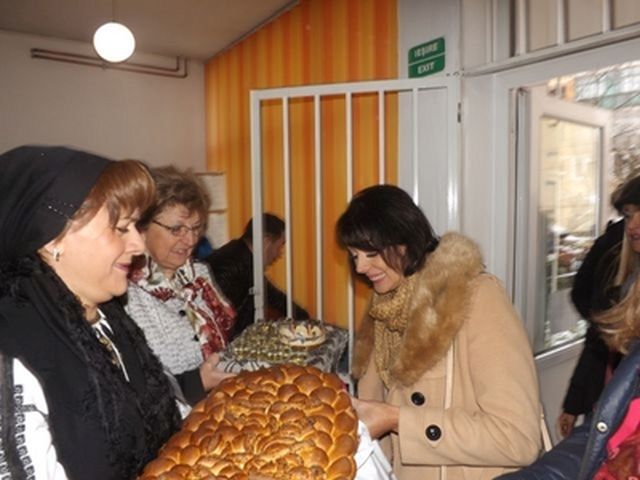
Pâinea şi sarea în tradiţia românească
Pâinea, străvechi simbol al vieţii, şi sarea, „mama lui Dumnezeu“, cum este denumită în zicerile din popor, au constituit, pentru români, două elemente cu caracter sacru. Poate cel mai cunoscut ritual în care sunt incluse ambele rămâne cel al întâmpinării oaspeţilor cu pâine şi sare, în semn de dragoste, bunătate şi omenie. De aceea noi ne-am întâmpinat în acest fel profesorii oaspeți la ceremonia de deschidere a primei reuniuni transnaționale Erasmus+ din România în luna noiembrie în 2016. În tradiţia creştin-ortodoxă, pâinea este simbolul vieţii, pe care omul i-o oferă lui Dumnezeu. Aceste valenţe sacre s-au transmis, de altfel, şi în tradiţia populară, pâinea în sine însemnând viaţă. Şi nu putem să exemplificăm mai bine acest simbol decât gândindu-ne la modul în care şi acum, ca şi odinioară, se pregătesc femeile din satele Moldovei să facă pâinea: în haine curate, cu broboada schimbată, frământând cu grijă aluatul, în covata de lemn, cu făina cernută, cu apă curată, de izvor, adăugând drojdia care va da viaţă aluatului, îl va face să crească, primenind apoi tăvile şi cuptorul, făcând semnul crucii înainte de a o pune la copt şi, în fine, pregătind un ştergar alb, pe care va fi aşezată pâinea aburindă. Cinstirea pâinii constituie încă un ritual sacru în satele Moldovei. Nu veţi vedea nici un bătrân din această parte de ţară care să nu te muştruluiască aspru dacă te va vedea aruncând pâinea rămasă de la masă sau chiar firimiturile. Să nu uităm, de asemenea, comportamentul oamenilor satului în faţa pâinii proaspete puse pe masă: cel mai în vârstă, stâlpul casei, sau mama copiilor face semnul crucii deasupra pâinii şi abia apoi o frânge şi o împarte, simbol transferat mai apoi şi către mămăligă, ca un substitut al pâinii celei „de toate zilele“, care se taie cu aţa în patru, în formă de cruce. Prima bucăţică (mai ales din pâinea de grâu nou) este considerată ofrandă pentru cei morţi şi trebuie aruncată ritual pentru aceştia. Ultima, numită şi «bucăţica norocului» sau «bucăţica puterii», concentrează, în gândirea populară, o putere magică de influenţare a viitorului copiilor, dar şi al adulţilor. Grânele, făina, aluatul şi în cele din urmă pâinea sunt încărcate de o simbolistică pe cât de veche, pe atât de prezentă în lumea satului, fiind, după caz, semn de bucurie, rodnicie, belşug, puritate. Luând diferite forme, pâinea îl însoţeşte pe om de-a lungul vieţii, în momentele de bucurie, dar şi la necaz. Iar acest lucru este vizibil şi astăzi în comunităţile tradiţionale, în diverse momente de peste an. Aceleaşi atribute sacre le-a avut şi le are şi în zilele noastre şi sarea, în satele Moldovei. Deloc întâmplător, se spune în popor că atunci când scapi sare pe jos înseamnă „va urma ceartă“, aceasta fiind un element de mare preţ în viaţa de zi cu zi. De aici şi zicala „ca sarea în bucate“, sugerând acel lucru despre care se spune că este indispensabil în anumite situaţii, aşa cum, fără sare, bucatele nu au gust.
Iulia Todor, elevă, Liceul Teoretic "Constantin Noica" Sibiu
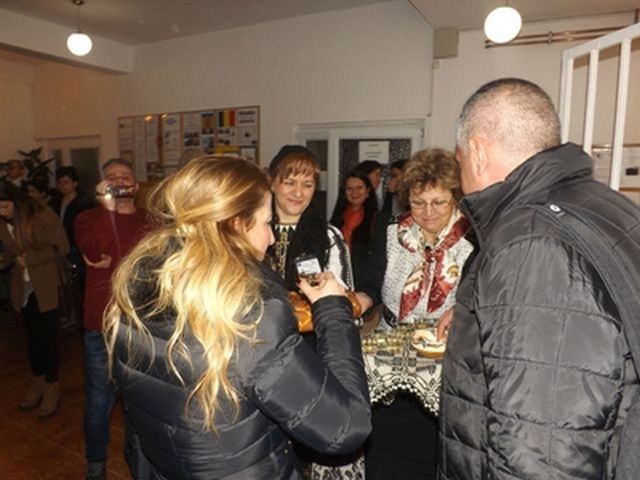
Lithuanian Customs and Traditions
Lithuanians usually marry while in their 20s, but some couples wait until they have more financial security. A lot of young couples take a bank loan to buy accommodation, but some of them live with their parents during the first years of marriage and may rely on them for financial support for some time. It is becoming more popular to live together before, or instead of, getting married. It is a legal requirement that marriages be performed at city hall, but many couples now also have a church ceremony. Weddings in rural areas may be quite elaborate, with the celebration lasting two days. Traditional customs are enjoying a resurgence in popularity. One of these involves the groom’s friends having to buy, with candy and whiskey, the bride and groom’s way through a succession of “ropes” of flowers that block the way home from the ceremony, the last of which usually stretches across the gate of the couple’s home. According to tradition, parents meet the newlyweds at the door with bread, salt, and wine glasses filled with water. The average family has one or two children; larger families are unusual. The father is generally considered the head of the family, but both parents share in raising children and working outside the home. In cities, most people live in apartments, but single-family homes are more common in rural areas. Many people in urban areas own or rent small gardens on the outskirts of cities to grow food and to have a place to relax. It is customary when greeting for men to shake hands (with direct eye contact and a smile), but women are less likely to do so. A handshake is nearly always used in professional contacts. When introducing a man, one uses Ponas("Mr.") before the last name; for a woman, the term is Ponia ("Mrs.") or Panele ("Miss"). A person's professional title is also used before the last name when applicable. Good friends may kiss cheeks. Adults do not use first names with each other until invited to do so, but young people are called by their first names. The most common terms for greeting are Laba diena ("Good day"), Labas rytas ("Good morning"), Labas vakaras ("Good evening"), Labas("Hello"), and Sveikas or Sveiki (both mean "How do you do?" but "Sveiki" is more casual). The official public holidays of Lithuania include New Year's Day (1 January), the Restoration of the Lithuanian State (16 February), Mother's Day (first Sunday in May), Easter, the Anniversary of the Coronation of Grand Duke Mindaugas of Lithuania (6 July), the National Day of Hope and Mourning, also known as All Souls' Day (1 November), and Christmas (25-26 December). Various local festivals are held throughout the year. Christmas Eve is the major celebration and the festival is celebrated according to the Lithuanian Traditions. Preparation starts many days prior to the arrival of the festival and is followed by home cleaning, home decoration, buying new clothes, giving gifts to the children along with the preparation of delicious sumptuous meal. The greatness of Lithuanian Traditions lies in the fact that they have maintained their traditions exactly the same way till date.
Steponas Mikalauskas, pupil, President Valdas Adamkus gymnasium Kaunas
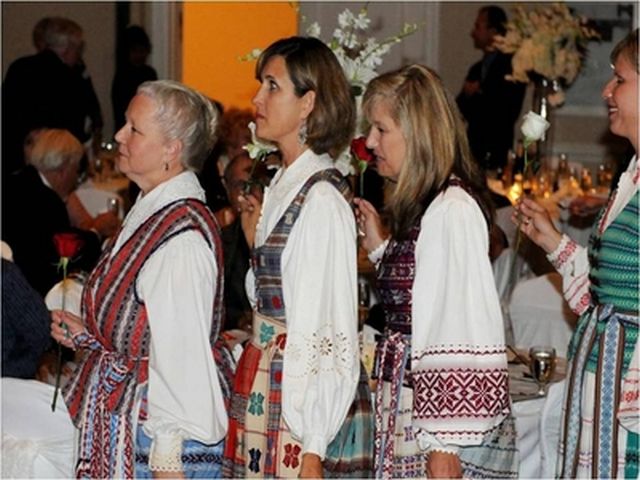
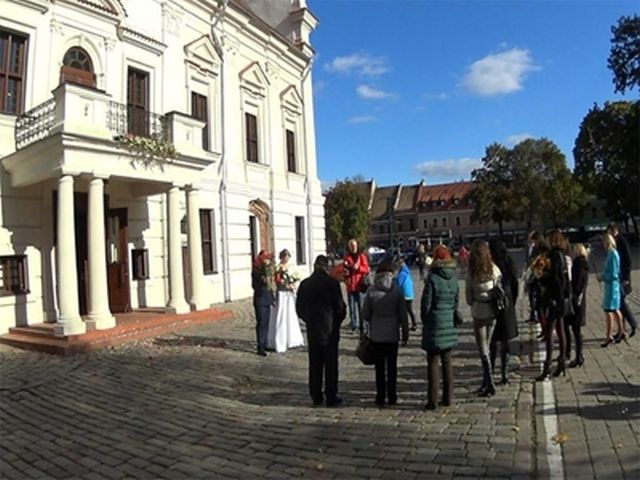
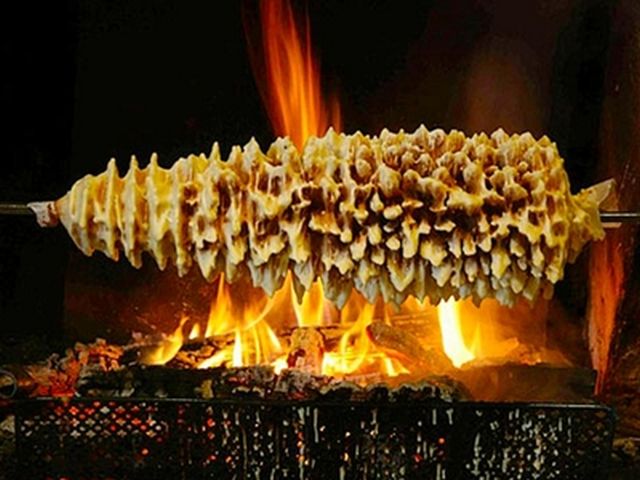
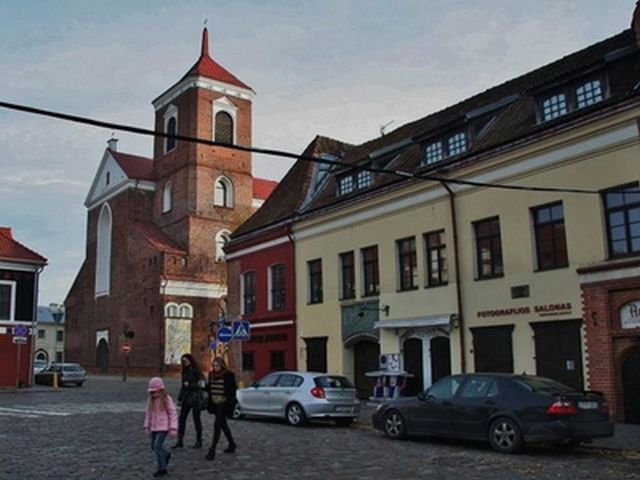
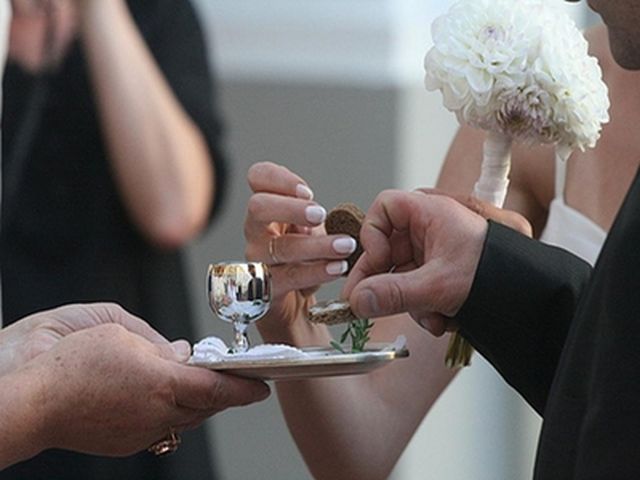
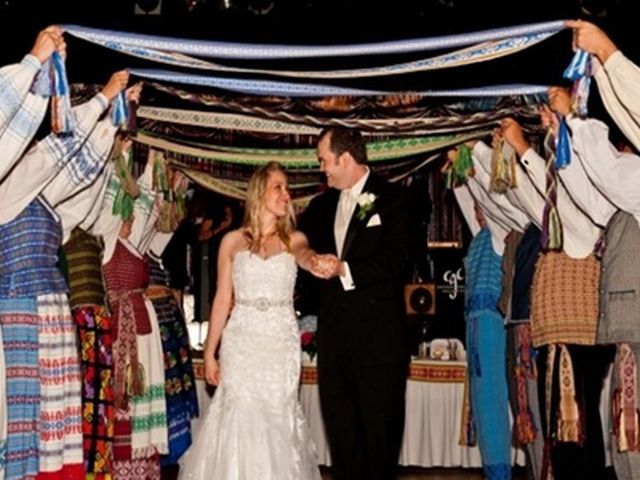
Lietuvių papročiai ir tradicijos
Lietuviai dažniausiai tuokiasi būdami 20-ies, bet kai kurios poros lauktia, kol jos turi daugiau finansinio saugumo. Jaunos poros yra daugiau linkę imti banko paskolą pirkti būstui, tačiau kai kurie iš jų gyvena su tėvais per pirmuosius santuokos metus ir gali jais remtis dėl finansinės paramos tam tikrą laiką. Tampa vis labiau populiaru gyventi kartu kurį laiką pries vestuves. Tai yra teisinis reikalavimas, kad santuokos būti atliekamas rotušėje, tačiau daugelis porų dabar taip pat tuokiasi bažnyčioje. Vestuvės kaimo vietovėse gali būti gana įmantrios, ši šventė trunka net dvi dienas. Kai kurios poros laikosi tradicinių papročių, kurie tampa vis labiau populiaresni. Vienas iš jų susijęs su jaunikio draugai turintys pirkti, saldainiai ir viskio, nuotaka ir jaunikis būdu per "virvių" iš gėlių, kad blokuoti kelią namo iš ceremonijos, eilės paskutinis kuris paprastai tęsiasi visoje vartai pora namų. Pagal tradiciją, tėvai patenkinti jaunavedžiams prie durų su duona, druska ir vyno taure alsuoja vandeniu. Vidutinė šeima turi vieną arba du vaikus; didesnių šeimų yra neįprasta. Tėvas paprastai laikomas šeimos galva, tačiau abu tėvai dalijasi auginant vaikus ir dirba už namų ribų. Miestuose, dauguma žmonių gyvena butuose, bet vienos šeimos namuose yra labiau paplitęs kaimo vietovėse. Daugelis žmonių miestuose savo arba išsinuomoti nedidelius sodus ant miestų augti maistą ir turi vieta atsipalaiduoti pakraštyje. Moterims sveikinantis yprasta pasisveikinti žvilgsniu ir šypsena, tačiau vyrai yra mažiau tikėtina, kad tai padarytų. Rankos paspaudimas yra beveik visada naudojamas profesinėje veikloje. Įvedant vyro, vienas naudoja Ponas ( "poną"). Prieš pavardė; moteriai, terminas yra Ponia ( "ponia"), arba Panele ( "Mis"). Asmens profesinė pavadinimas taip pat naudojamas prieš pavardę, kai taikoma. Geri draugai gali pabučiuoti skruostus. Suaugę nenaudokite vardai tarpusavyje, kol kviečiami tai padaryti, bet jauni žmonės vadinami vardais. Dažniausiai sąlygos pasveikinimas yra laba diena (Laba diena), Labas rytas (labas rytas),, Labas vakaras ( "Labas vakaras"), "Labas" ( "Labas"), o Sveikas ar Sveiki (abu reiškia "Kaip do you do? ", bet" Sveiki "yra daugiau atsitiktinis). Į Oficialias valstybinės šventes Lietuvosje įtraukti Naujųjų metų diena (sausio 1), Lietuvos valstybės diena (16 vasario), Motinos diena (pirmasis gegužės sekmadienis), Velykos, iš didžiojo kunigaikščio Mindaugo karūnavimo metinės (6 liepa), Nacionalinė diena Vilties ir Gedulo, taip pat žinoma kaip (1 lapkričio) Vėlines ir Kalėdos (25-26 gruodžio). Įvairūs vietos festivaliai vyksta ištisus metus. Kūčios yra pagrindinė šventė ir švenčiama pagal lietuviškas tradicijas. Pasirengimas prasideda daug dienų iki kūčių. Egzistuoja tradiciniai dvylika patiekalų, vyksta namų valymas, puošiami namai, ir žinoma daug dovanų artimiesiems. Lietuviškų tradicijų didybė slypi tame, kad jie išlaikė savo tradicijas iki pat iki šių dienų.
Oresta Arbasauskaite, mokinys, President Valdas Adamkus gymnasium Kaunas
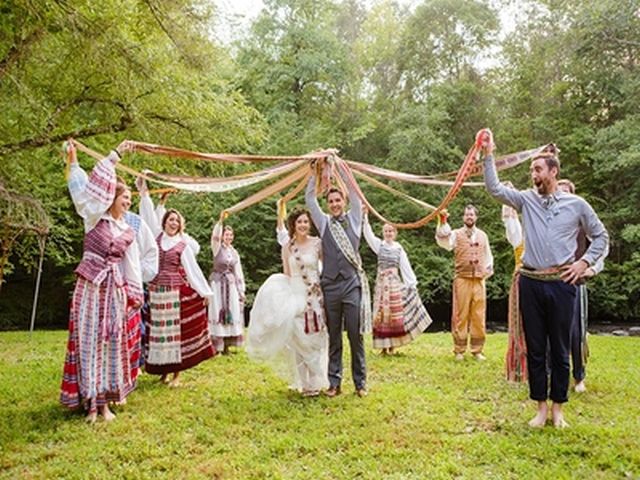
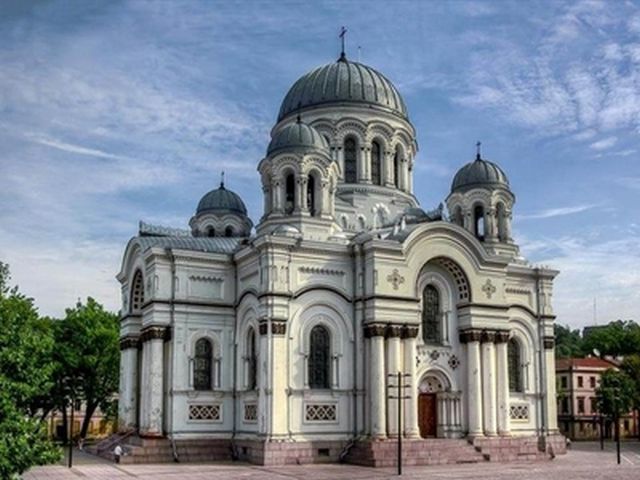
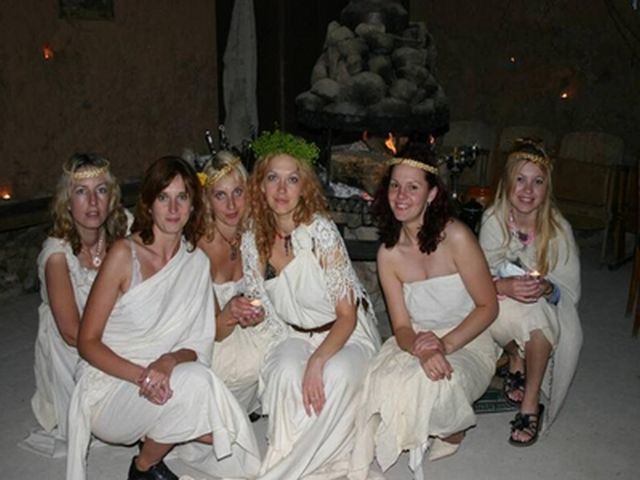
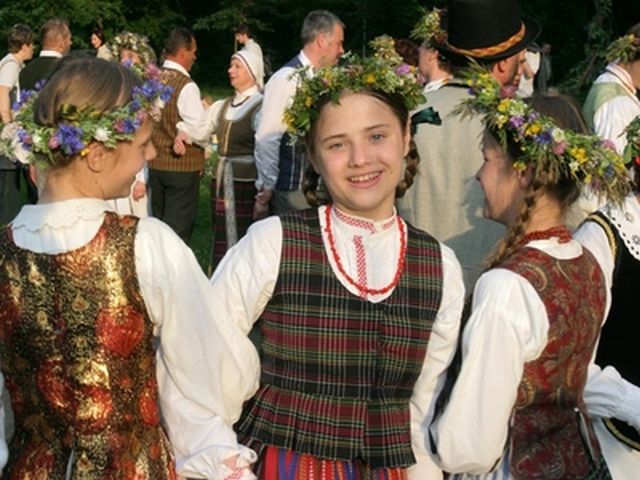
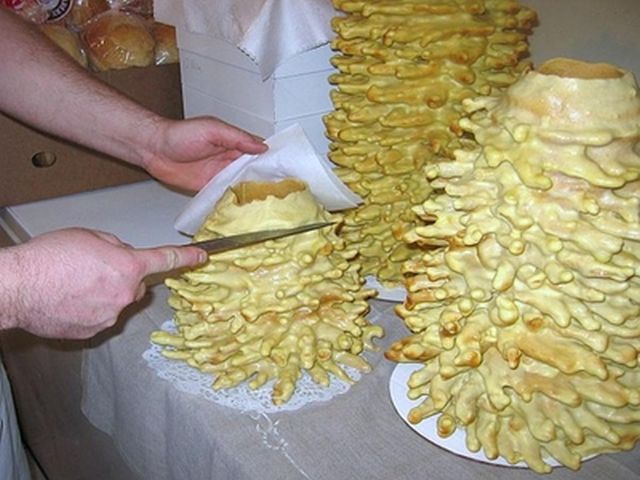
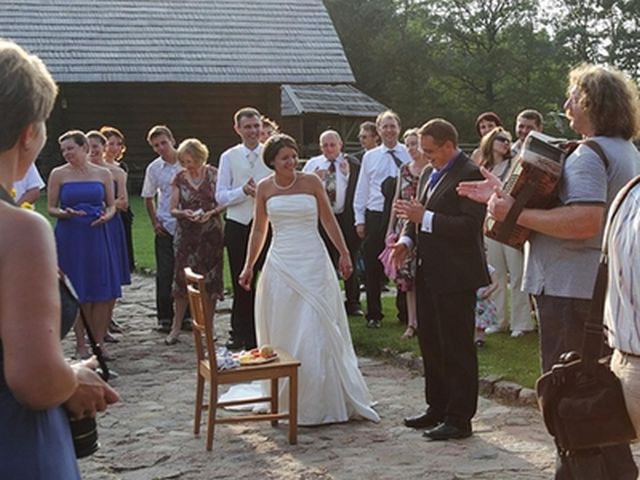
Turkish Bath
Baths used for cleaning, has a very important place in our culture. Especially a bath in the Ottoman culture, although a part of your daily life, has held a major in literature and languages. Firstly, in Ottoman times, men and women would prefer a bath to bathe. The women meet there, get food to eat and a fun layout. Turkish Bath with its steamy ambient with a focus on cleaning and water, its clean conditions and water usage has accomplished to be ahead of its alternatives such as Rome and Finnish hammams, steam baths and sauna and kept the best features until today. In West Europe it became popular in Victorian era as a cleaning and relaxing method and considered as a combination of Sauna culture, ancient Greek and Rome practices and enables the methods applied for centuries to be kept by reflecting the Turkish culture in every era. Turkish Bath traditionally starts in relaxing room and the hot air enables the person to sweat. After taking the shower guests take a cold shower and enter into a even hotter section and guests take a shower with the help of a rubber and bath attendant and get a massage. After cleaning guests sit in the cold room and have a rest. In this section they can order beverages such as soft drink, ayran (traditional Turkish drink) and mineral water and this section can be a place for the guests where they get prepared to the day with a Turkish coffee. Hammam terms: marble stone - a wide marble platform on which guests lie on and heated from underneath of it, furnace - a close and wide fireplace from which the hammams are heated.(the size of the furnace can vary by specific features such as the size of the marble stone, ambient and the size of the hammam. In big and professional hammams as Onay Turkish Bath, heat-adjustable boiler systems are used to spread the right feel and heat around every corner of the hammam); hot place - the place over furnace (this is the hottest section of the hammam); cold place the place far away from furnace; center - the place heated in a less level in between the cleaning and getting dressed places in the hammams; bath attendant - the woman helping the customer for cleaning and providing pouch service in women section; rubber - the man helping the customer for cleaning and providing pouch service; pestamal - thin cloth to cover the body; takunya - hammam slipper; yanaşma - room keeper. Turkish Bath combines of Anatolian hammams, Rome thermal plants and baths and Middle Asia Turkish steam baths with Turkish and Islamic culture in terms of structure and architecture. After Turks entered to the Anatolia in 10th century cultural and architectural affects changed the architecture of the hammams by combining the Byzantine affect in Anatolia and the Turkish Bath culture internalized and spread to the other counties. Especially during Ottoman Empire era Hammam architecture was developed. Mimar Sinan contributed to the Turkish Hammam architecture with important architectural work such as "Çemberlitaş Hammam", "Baths in Süleymaniye Mosque" and "Selimiye Mosque Baths" in Edirne.
Mert Guler, pupil, Vali Mehmet Lutfullah Bilgin Ortaokulu
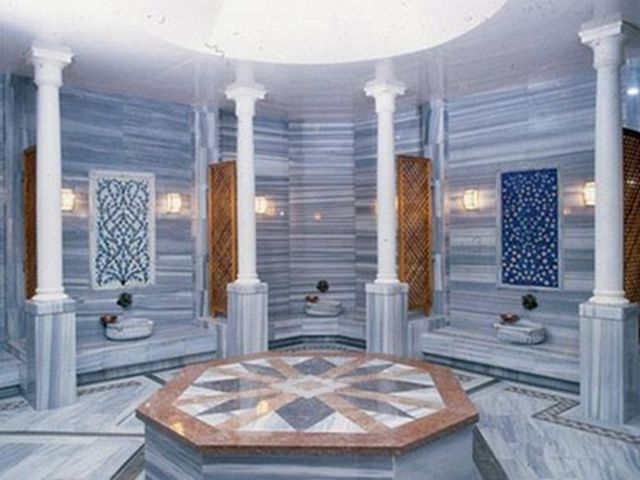
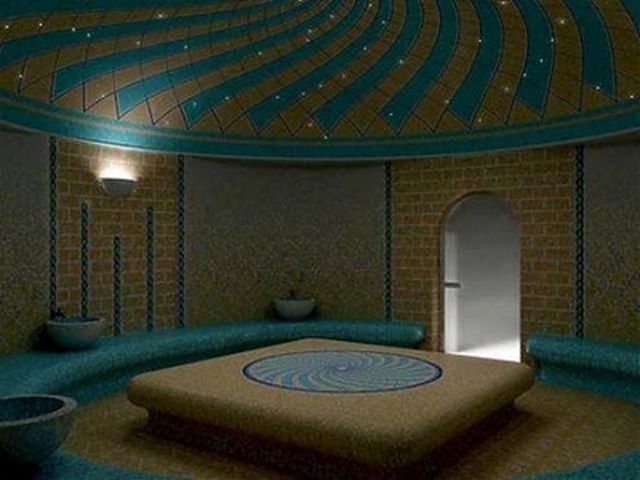
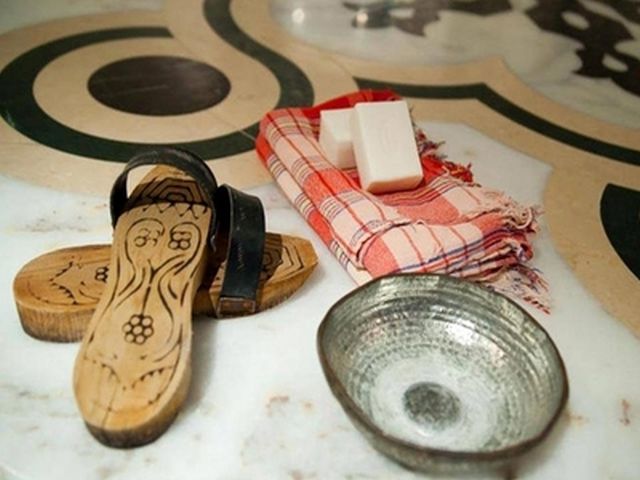
Türk Hamami
Temizlik için kullanılan hamamlar, bizim kültürümüzde oldukça önemli bir yere sahiptir. Özellikle de Osmanlı kültüründe hamam, günlük hayatın bir parçası olmakla birlikte, edebiyatta ve dilde de önemli bir yer tutmuştur. Türk Hamamı, temizlik ve suya odaklanmış buharlı ambiyansı, temizliği ve suyun kullanımı ile Roma, Fin hamamları, buhar banyosu, sauna gibi alternatiflerinden daha önde olmayı başarmış, günümüze kadar en iyi özellikleri ile taşınmıştır. Öncelikle Osmanlılar zamanında kadınlar ve erkekler, yıkanmak için hamamı tercih ederlermiş. Aynı zamanda hamamlar, kadınların sosyalliği açısından da önemli bir tutarmış. Kadınlar orada buluşup, yemekler yer, eğlenceler düzenlerlermiş. Batı Avrupa’da, Viktoryan dönemde, temizlenme ve rahatlama metodu olarak popüler olmuş, Sauna kültürünü, antik Yunan ve Roma uygulamalarının birleştirilmesi olarak yorumlanmış, Türk kültürünün ezgisini her dönemde yansıtması ile yüzyıllardır uygulanan metotların korunmasını sağlamıştır. Türk Hamamı geleneksel olarak dinlenme odasında başlar, sıcak hava banyo yapan kişinin terlemesi saplanır. Banyo yapanlar, soğuk duş aldıktan sonra daha da sıcak bir bölüme geçerek tellak ve natır tarafından yıkanır ve masaj yapılır. Temizlik bittikten sonra hamama gelenler serinleme bölümlerinde oturur ve bir süre rahatlarlar. Burası aynı zamanda serinlemeye yardımcı olacak gazoz, ayran, soda gibi içeceklerin sipariş edilebildiği, bir Türk kahvesi ile güne hazırlandığı yerler olarak da kullanılır. Hamam terimleri: göbek taşı - hamamlarda, terlemek için üzerine uzanılan ve alttan ısıtılan geniş mermer seki; külhan - hamamların ısıtıldığı, kapalı ve geniş ocak. Göbek taşının büyüklüğü, hamamın ambiyansı ve büyüklüğü gibi değişkenlere göre farklı şekil ve büyüklükte olabilir. Onay Hamamı gibi büyük ve profesyonel hamamlarda ise hamamın her noktasında doğru duygu ve sıcaklığı yansıtması açısından ısı ayarlı kazan sistemleri kullanılmaktadır; sıcak halvet - külhanın üstü. Hamamın en sıcak olduğu yer; soğuk halvet - külhana uzak olan yer; meydan - hamamlarda yıkanılan yerle giyinilen yer arasındaki az ısıtılan yer, soğukluk; natır - kadınlar hamamında hizmet eden ve müşterileri yıkayan, keseleyen kadın; tellak - müşterileri yıkayıp keseleyen erkek çalışan; peştamal - örtünmek için kullanılan ince dokuma; takunya - hamam terliği; yanaşma - oda görevlisi. Türk Hamamları yapı ve mimari olarak, kendisinden önce gelen Anadolu hamamlarını, Roma termal ve banyolarını ve Orta Asya Türk buhar banyosu elemanlarını yüzlerce yıllık Türk ve İslami kültür ile birleştirmiştir. 10. yy 'da Türklerin Anadolu'ya gelmesi ile kültürel ve mimari etkiler Anadolu'daki Bizans'ın etkisi birleşerek hamam mimarisini değiştirmiş, oluşan Türk Hamamı kültürü içselleştirerek diğer ülkelere de taşınmıştır. Özellikle Osmanlı İmparatorluğu döneminde Hamam mimarisi oldukça gelişmiş, Mimar Sinan'da bu yapılara, "Çemberlitaş Hamamı", "Süleymaniye Camii'ndeki Banyolar" ve Edirne'deki "Selimiye Camii Banyoları ile kendisine özgü dokunuşunu sergileyerek Türk Hamamı mimarîsine büyük eserler bırakmıştır.
Emre Kara, öğrenci, Vali Mehmet Lutfullah Bilgin Ortaokulu
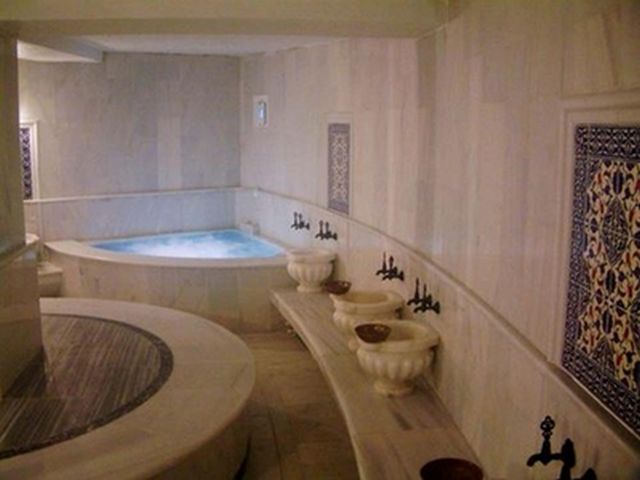
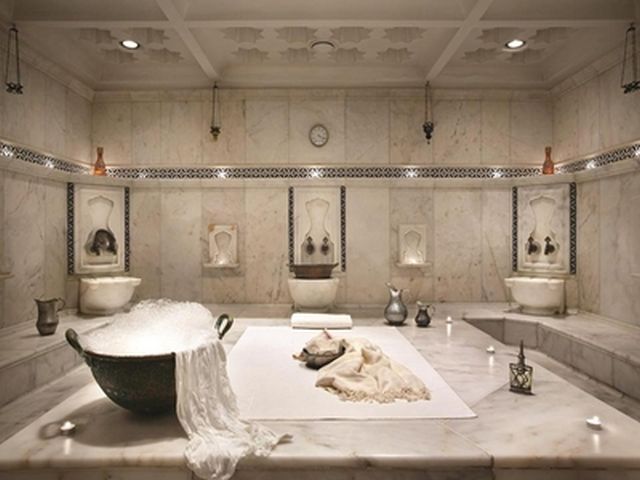
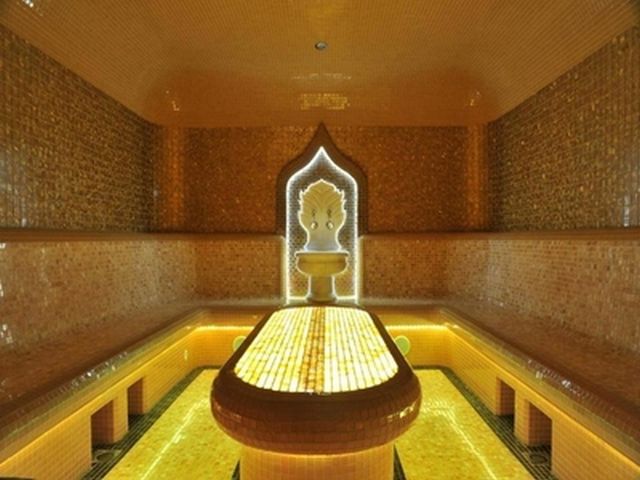
Singing Traditional Carols
The pupils of the 2nd class B and pf the 4th class A involved in the Erasmus+ project „Ecological Literacy”, accompanied by their primary level teachers, Mrs. Mădălina Sporiș and Gabriela Mirela Jugar wanted to share to their partners some unique moments in their community. In this respect they made a few movies during their artistic programmes of carols. One of them was that performed at the church in their neighbourhood with the opportunity of the annual invitation of the priests for schools and the whole community. We uploaded it on TeacherTube and YouTube in order to get the link and the embed code, necessary to post the movie on the project website, added to the description of this local Erasmus activity. Santa Claus gave gifts to the children in need, helped by sponsors from our community. The Erasmus team of pupils offered to the poor people gifts made by them during their Craft lesson.
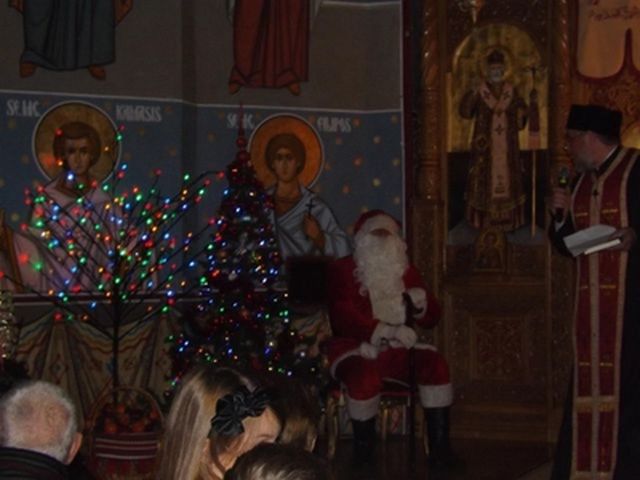
http://www.teachertube.com/video/erasmus-pupils-team-in-c-noica-high-school-sibiu-singing-carols-442949
Gabriela Mirela Jugar, ELIT project coordinator, "Constantin Noica" Theoretical High School Sibiu
Cântând colinde tradiționale
Elevii din clasa a 2-a B și a 4-a A, implicați în proiectul Erasmus+ "Alfabetizare Ecologică", însoțiți de învățătoarele lor, d-nele Mădălina Sporiș și Gabriela Mirela Jugar au dorit să împărtășească partenerilor lor unele momente unice din comunitatea lor. În acest sens, ei au făcut câteva filme în timpul programelor lor artistice de colinde. Unul dintre ele a fost acela realizat la biserica din vecinătatea lor cu ocazia invitației anuale a preoților pentru școli și întreaga comunitate. Noi l-am încărcat-o pe TeacherTube și YouTube, în scopul de a obține link-ul și codul de încorporare, necesar pentru a posta filmul de pe site-ul proiectului, adăugat la descrierea acestei activități Erasmus locale. Moș Crăciun a dat cadouri copiilor care nevoiași, ajutat de sponsori din comunitatea noastră. Echipa Erasmus de elevi a oferit daruri oamenilor săraci, făcute de ei în timpul orelor de Abilități Practice.
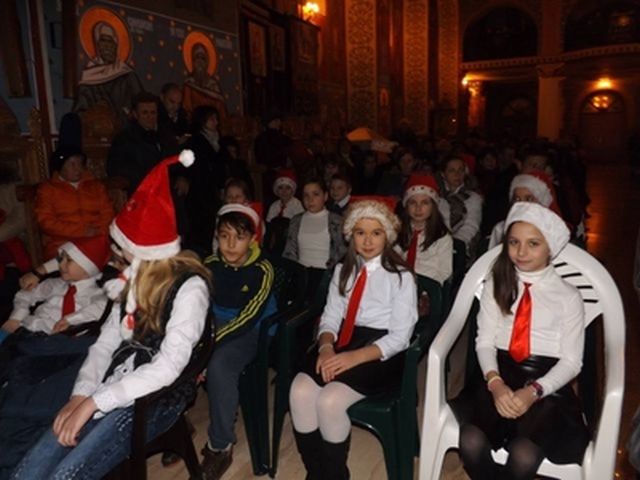
https://www.facebook.com/stefana.atanasoaiei/videos/1834463870105395/
Adina Secu, profesor, Liceul Teoretic "Constantin Noica" Sibiu
Preparing a Presentation by Comparing Two Countries
On January 30, 2017, the students of 6-7th grades that take part in the international ELIT project had a usual Erasmus+ meeting on Monday. The meeting focused on group working and preparing a presentation comparing two countries. The topics varied from wedding traditions in Lithuania and Portugal to predominant superstitions in Lithuania and Romania to dishes in Lithuania and Cyprus to traditions of giving presents in Lithuania and Turkey to free time activities of young people in Lithuania and Croatia. Particular attention was paid to the content, design and information presented in the slides as well as the very presentation since a week ago the students were advised on how to properly prepare and give a presentation to engage the audience. The meeting was a great success. Students’ ingenuity and imagination were boundless. All the presentations were incredibly interesting. The students not only presented interesting facts on a certain topic, but also prepared some exciting tasks, questions and games. Students who answered correctly were given prizes. Laughter and positive emotions filled the classroom. At the end of the meeting the teacher announced three winners that will go to the first mobility to Cyprus. We are happy for the lucky three and wish them a lot of unforgettable experiences. Following are the lucky winners: 1. Oresata Abašauskaitė (Class 7b); 2. Salvija Ananaitytė (Class 6b); 3. Steponas Mikalauskas (Class 7b).
Vita Kuliešiūtė, teacher, President Valdas Adamkus gymnasium Kaunas
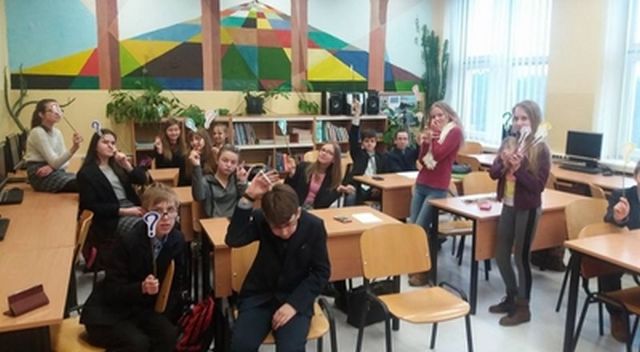
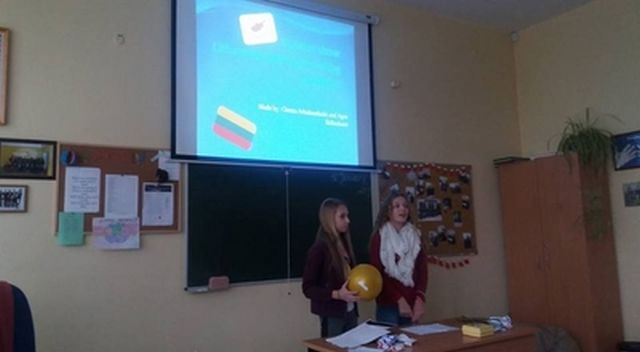
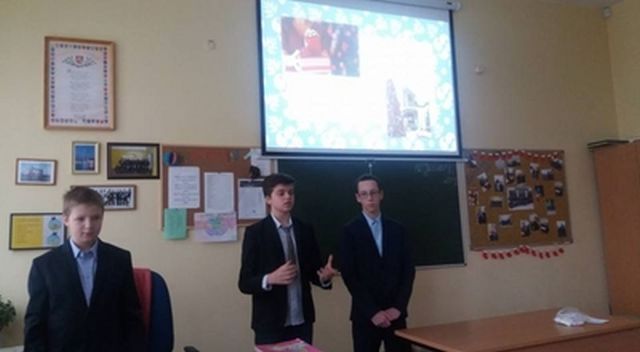
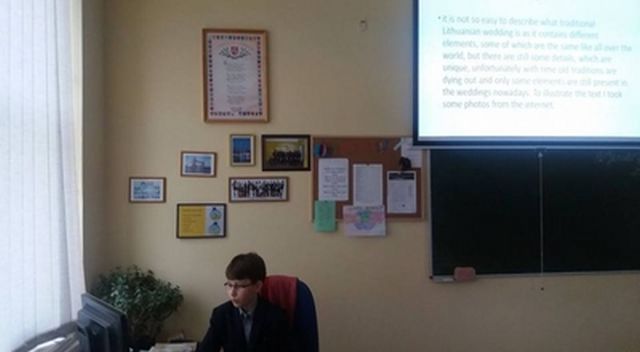
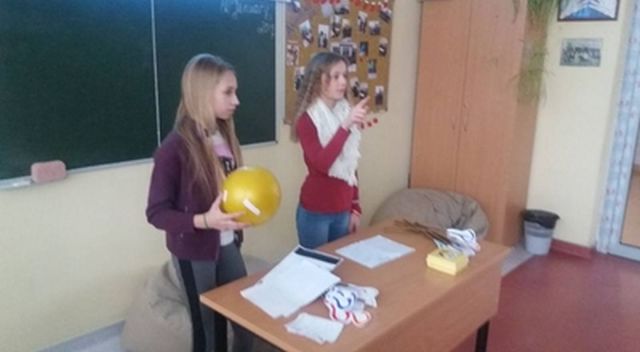
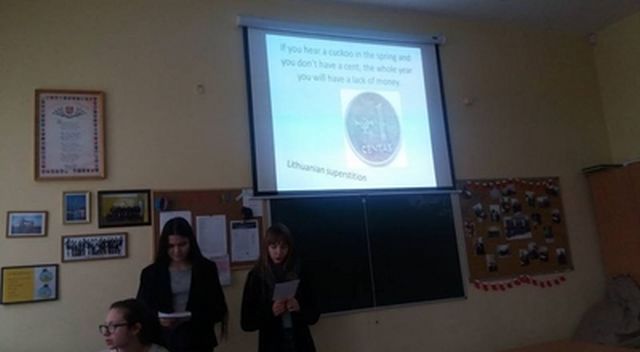
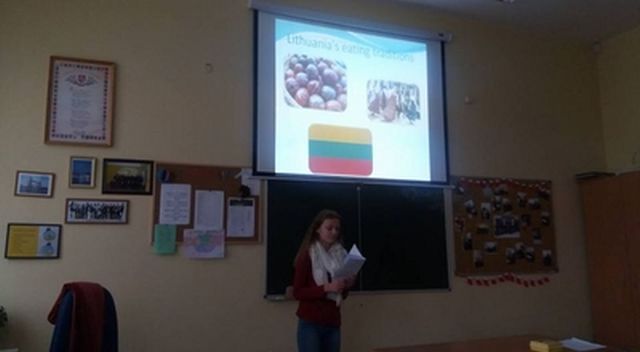
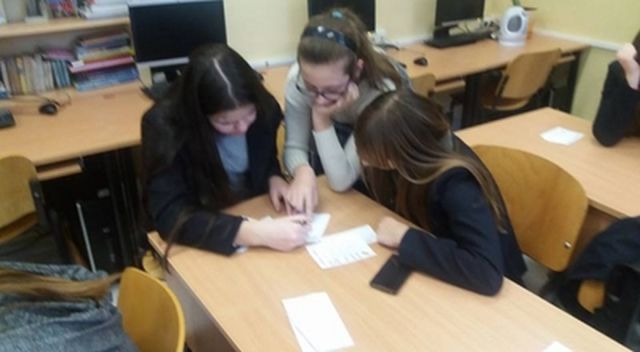
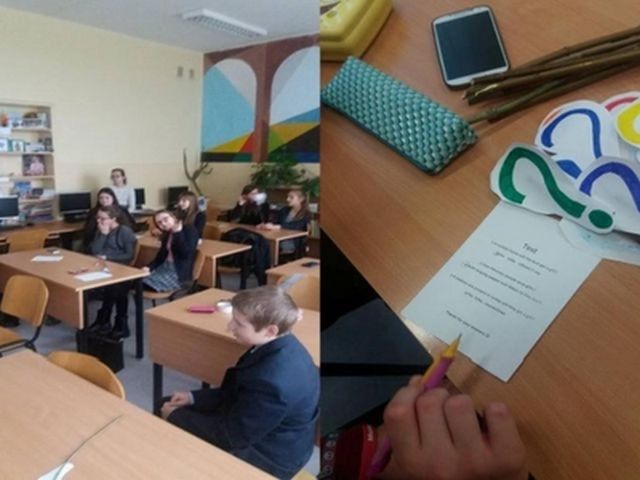
Pasiruošimas pristatymas lyginant dviejų šalių
Š.m sausio 30d. tarptautinio projekto ELIT dalyviai , 6-8 kl. mokiniai, rinkosi kaip ir kiekvieną pirmadienį į Erasmus+ tarptautinio projekto grupės narių užsiėmimą. Šį kart mokiniai dirbdami grupelėse turėjo paruošti pristatymą pagal savo ištrauktą temą. O temos buvo pačios įvairiausios: Lietuvos ir Portugalijos vestuvių tradicijos, Lietuvoje ir Rumunijoje dominuojantys prietarai, Lietuvos ir Kipro patiekalai, dovanų dovanojimo tradicijos Lietuvoje ir Turkijoje, kaip jaunimas leidžia laisvalaikį Lietuvoje ir Kroatijoje. Ypatingas dėmesys buvo kreipiamas į skaidrių paruošimą bei patį pristatymą. Prieš savaitę projekto koordinatorė pateikė mokiniams medžiagą apie svarbiausias pristatymų detales, ką daryti, kad sudominti klausytoją. Iš tiesų pasidžiaugt buvo kuo. Mokinių išradingumui ir fantazijai nebuvo ribų. Pristatymai buvo įdomesni vienas už kitą... Mokiniai ne tik įdomiai pristatinėjo informaciją, bet ir buvo prisiruošę įdomių užduočių, klausimų, žaidimų... O už teisingus atsakymus buvo apdovanoti savo pačių paruoštais prizais. Netrūko juoko, teigiamų emocijų o tuo pačiu ir mokinių akiratis prasiplėtė. Na, o užsiėmimo pabaigoje mokytoja paskelbė pirmus tris nugalėtojus, kurie vyks į pirmąjį mobilumą- į Kiprą. Džiaugiamės visi kartu ir sveikiname laimingąjį trejetuką linkėdami jiems daug įspūdžių ir nepamirštamų akimirkų. Taigi valio sakome: 1. Oresatai Abašauskaitei (7bkl.); 2. Salvijai Ananaitytei (6bkl.); 3. Steponui Mikalauskui (7bkl.). Didelės jiems sėkmės kelionėje ir nepamirštamų įspūdžių.
Indrė Šlajūtė, mokytojas, President Valdas Adamkus gymnasium Kaunas
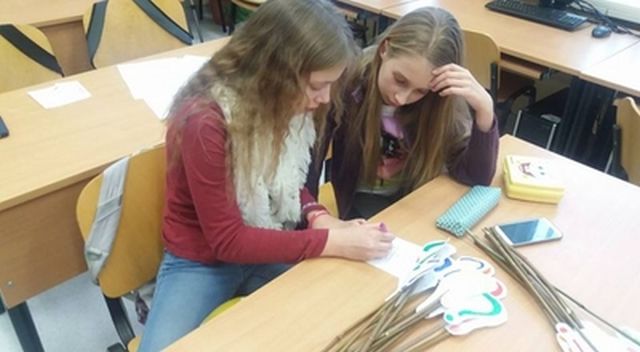
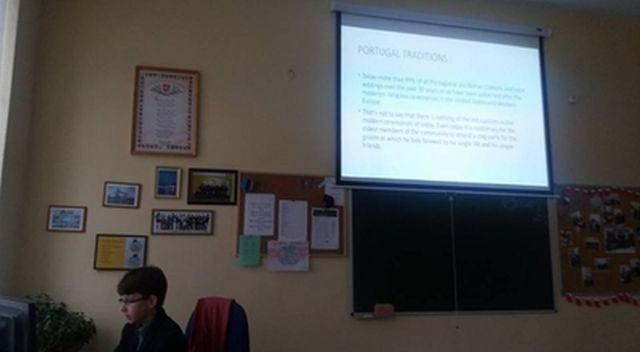
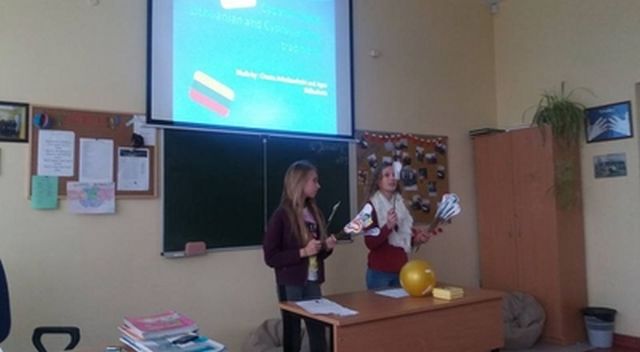
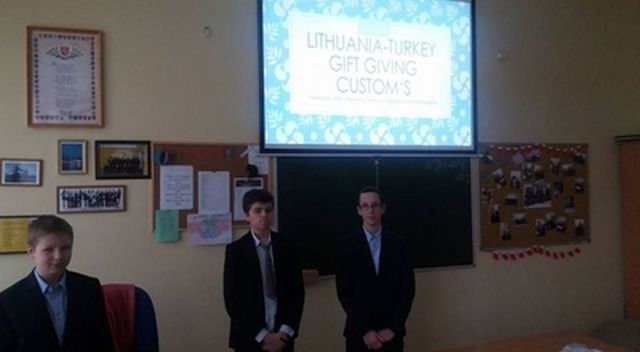
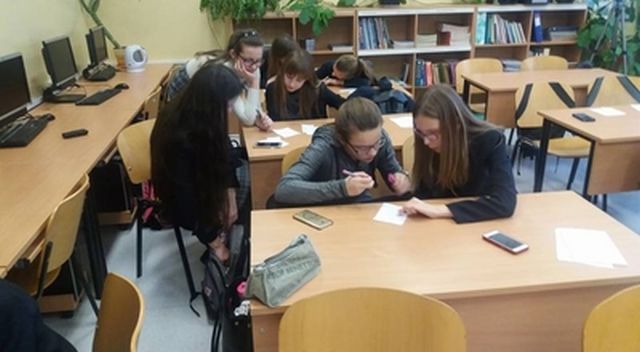
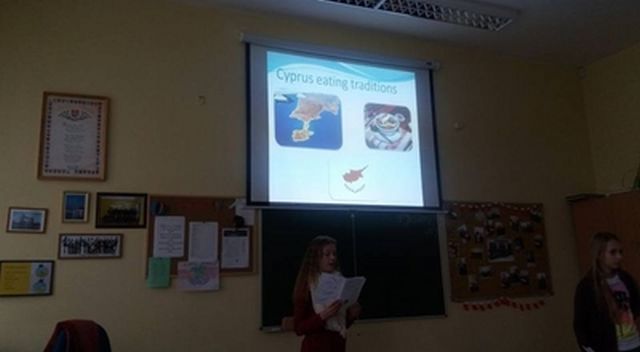
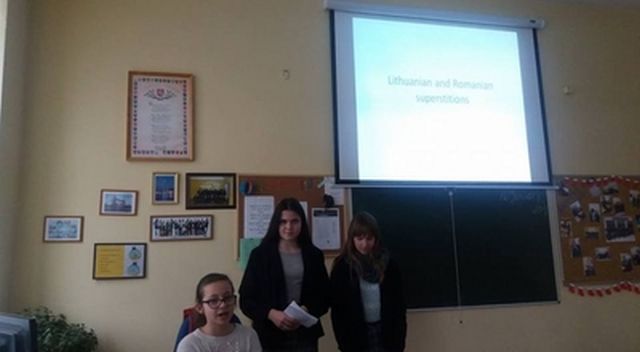
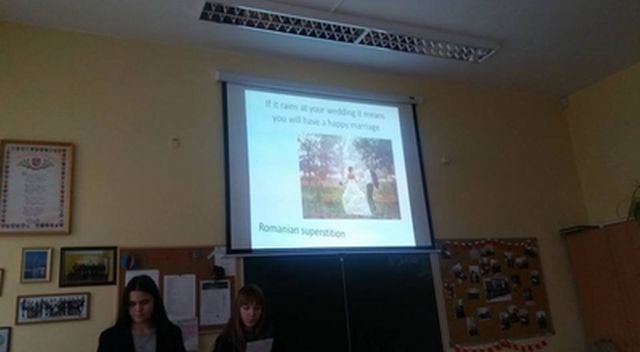
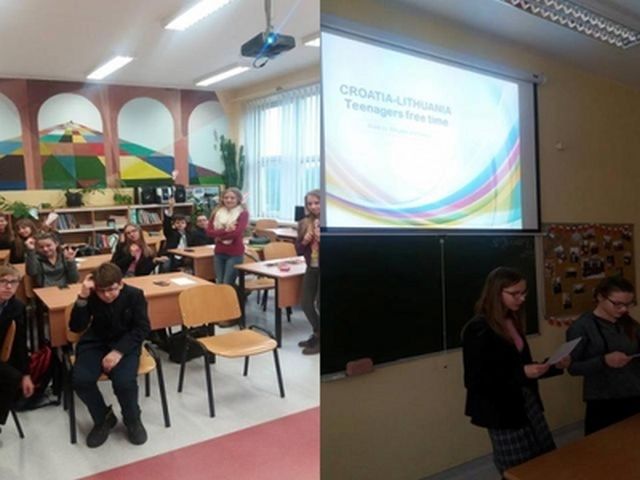
The Legend of the Trinket
As is known, the cultural identity of each people can be reflected by the myths and legends that have accompanied it throughout his development. It is therefore very important to know the folk literature, myths and legends that have circulated once on these places. Among the legends listened by us at school is also "The Legend of the Trinket" known in various forms. In Romania "Trinket " celebrates the coming of spring. Offered on the 1st of March, it is a habit specific to Romanian. On this day, men give the ladies trinkets, which are said to bring happiness and luck. In Bukovina, however, those who receive trinkets are men. Traditionally, trinkets or Little March Amulets are formed of a string blended in red and white, with which are tied symbols of luck: a clover with four leaves, a horseshoe, a sweeper. The trinket is a Romanian habit, which we don't find in other nations. Throughout time, the tradition of the trinket was also taken by other populations from the south of the Danube. Today, the habit is particularly widespread at our Bulgarian neighbors, too. The trees from the neighboring country are filled with white-red strings in spring. Moreover, in our country, traditionally, after it is no longer worn, the trinket or the string is clung in a tree blooming. Together with our pupils, I created trinkets, and then we thought why we wouldn’t reinvent the legend of the trinket on a special paper imitating parchment. We composed, drew and managed to restore special legends, born from the creativity of the little pupils of only 10 years old. All creations have found their place in our school library, where we can admire the whole March.
Gabriela Mirela Jugar, ELIT project coordinator, "Constantin Noica" Theoretical High School Sibiu
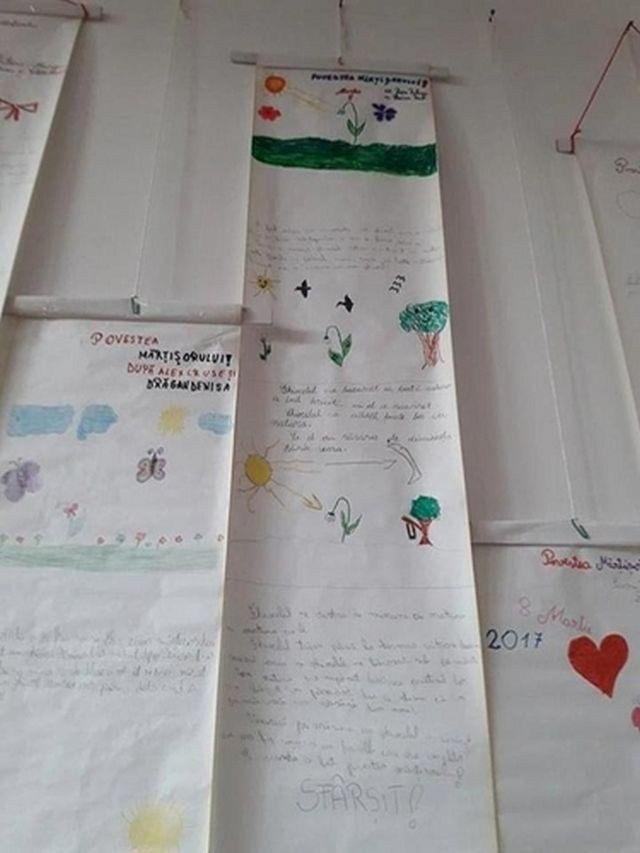
Legenda mărțișorului
După cum se știe, identitatea culturală a fiecărui popor poate fi reflectată de miturile și legendele care l-au însoțit pe tot parcursul dezvoltării lui. De aceea, este foarte important să cunoaștem literatura populară, miturile și legendele care au circulat odinioară pe aceste meleaguri. Printre legendele ascultate de noi la școală se află și ”Legenda mărțișorului”, cunoscută sub diferite forme. În România ”Mărţişorul” celebrează venirea primăverii. Dăruit de 1 martie, el este un obicei specific românesc. În această zi, bărbaţii oferă doamnelor şi domnişoarelor mărţişoare, despre care se spune că sunt aducătoare de fericire și noroc. În Bucovina însă, cei care primesc mărţişoarele sunt bărbaţii. Tradiţional, mărţişoarele sunt formate dintr-un şnur împletit roşu cu alb, cu care se leagă simboluri ale norocului: trifoi cu patru foi, potcoavă, coşar. Mărţişorul este un obicei specific românesc, pe care nu îl regăsim la alte popoare. În timp, tradiţia mărţişorului a fost preluată şi de alte populaţii de la sud de Dunăre. Astăzi, obiceiul este deosebit de răspândit şi la vecinii bulgari. Copacii din ţara vecină sunt plini de şnururi alb-roşii primăvara. De altfel, şi la noi, în mod tradiţional, după ce nu se mai poartă, mărţişorul sau măcar şnurul acestuia se agaţă într-un copac înflorit. Împreună cu elevii noștri am creat mărțișoare, apoi ne-am gândit de ce nu am reinventa legenda mărțișorului pe o hârtie specială, imitând pergamentul. Am compus, am desenat și am reușit să redăm legende deosebite născute din creativitatea micilor elevi de doar 10 ani. Toate creațiile și-au găsit locul la biblioteca școlii noastre, unde le vom putea admira toată luna martie.
Mădălina Sporiș, profesor, Liceul Teoretic "Constantin Noica" Sibiu
